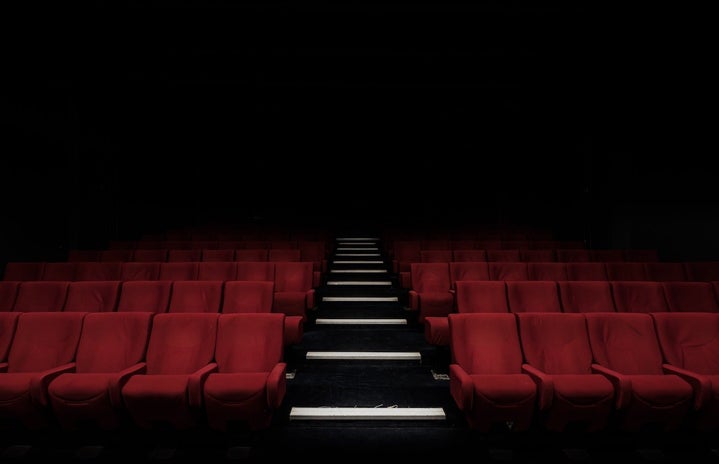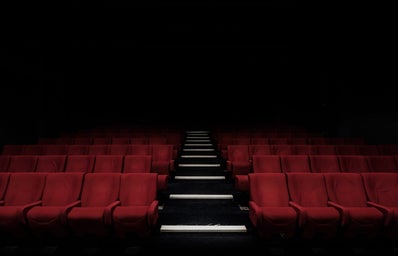The tragic characters of Shakespeare, the green empowered witch from “Wicked” and the scary Phantom Of The Opera: when we think of theater, it’s quite instantaneous to bring to mind these and many other successful international productions. But, did you know that, here, in Brazil, it is also possible to find on the stage a lot of heroes and heroines as interesting as all of these Elphabas and Hamlets?
The Brazilian theater scene has grown to unbelievable levels in recent times, especially in regard to musicals. Brazil is already the third biggest producer of musicals in the world, behind only the United States and England. And there’s more: in 2018, the musical shows staged in the city of São Paulo provided an economic impact of more than R$ 1 billion! Incredible, right?
And in addition to the numerous international productions that have gained a version in Brazilian territory, there are several playwrights and composers who for years have written their own plays in and about Brazil. So, in celebration of the National Theater Day, Her Campus Cásper Líbero prepared a list of 8 national plays and musicals which you need to watch. Get your popcorn, find your seat before the curtains open and check out some incredible “tupiniquim” productions!
- Se Essa Lua Fosse Minha
-
Is there anything more culturally national than our “cantigas de roda”? Written by the young and awarded playwright Vitor Rocha, the musical “Se Essa Lua Fosse Minha” dives into the songs and beliefs of Brazilian folklore to tell a story of love and segregation. The poetic plot is a story about the Brazilian tradition of telling stories: our popular children’s games, national literature, cirandas and popular sayings are all mixed together in an exciting and profound script.
The play takes place in Porto Leste, an island divided by a line that segregates the natives of the travelers of Terrarrosa who arrive there. The differences between them are put to test when Leila and Iago, residents of opposite sides of the line, fall in love. Romantic and full of lyricism, the story of this forbidden love is packed with original songs that bring elements of Brazilian rhythms and excerpts from popular and folklorical songs that are part of our national imagination.
- 70? Década do Divino Maravilhoso
-
Have you ever imagined watching a documentary in living color, performed on stage? Well, the directors Frederico Reder and Marcos Nauer turned this idea into reality! “70? Década do Divino Maravilhoso” is an overproduction, which came to initiate a completely new form of making musicals: with more than two and a half hours of presentation, the show proposes to portray the 70’s decade using the songs that packed the most remarkable events of those years.
With very little spoken text, the musical is built with the help of more than 250 songs, which are performed live by a huge cast that calls attention for the diversity. The role of illustrating each historic moment is also in charge of clippings from newspapers and magazines, excerpts from documentaries, advertisements and TV news, which are all projected on the more than 5 led screens that make up the stage in the shape of a vinyl record. To complete the package, the play had as special guests Baby do Brasil and the disco trio “As Frenéticas”. This play is perfect if you are looking for a production that is both entertaining, critical and informative!
- Ópera do Malandro
-
A national, critical and political anti-heroism? Check! “Ópera do Malandro” was written by the MPB composer Chico Buarque and reached the Brazilian stages in 1978, at the height of the most repressive phase of the military dictatorship. Living up to the country’s troubled period, and inspired by the classics “Ópera dos mendigos” (by John Gray) and “A Ópera dos Três Vinténs” (by Bertolt Brecht), this musical presents very strong social thematics.
The backdrop is the Rio de Janeiro of the 1940’s decade, with all its peculiarities: the “jogo do bicho” (game of animals), the smuggling in the streets of Rio, prostitution on the sidewalks of Copacabana… Everything in the plot approaches betrayal, falsehood and even homophobia, through the figure of the transvestite Geni. A play that autopsies the essence of the “jeitinho brasileiro”.
- Eles Não Usam Black-tie
-
Still in this breath of theater performances with political bias, there is this 1948’s production written by the Italian playwright naturalized Brazilian, Gianfrancesco Guarnieri. “Eles Não Usam Black-tie” has as its main plot the strike and the life of the working class and was a milestone in the history of national theater, becoming the first play to fight against the tide of theatrical pomposity and put the workers and residents of the favelas in the spotlight.
With simple and not luxurious scenarios and costumes, the play tells the story of a clash between father and son with completely opposite and divergent ideological and moral positions. “Eles não usam black-tie” combines everyday dilemmas in the favela with a debate about universal reflections and abstract concepts, such as the fragile human condition and social issues and conflicts. - Gota D’Água
-
“Drop of Water” is a Greek tragedy with a Brazilian taste! The musical brings a national version of Medea’s story, from Euripedes. In a plot of betrayal, revenge and social injustice, which has as its scenery as the suburb of Rio de Janeiro, a samba composer, Jasão, gives up his lover, Joana, to marry a daughter of a millionaire.
The narrative of the couple, as well as the soundtrack of the play, was written by Chico Buarque and Paulo Pontes, in 1975; the tale, however, as current as ever, remains being played around the country. In 2016, moreover, it received an unprecedented adaptation, directed by Rafael Gomes, named “Drop of Water [Dry]”, which brings an even more political plot and more songs!
- O Auto da Compadecida
-
Yes, before the famous audiovisual productions, “O Auto da Compadecida” was originally a stage play! Written by Ariano Suassuna in 1955, this theatrical work tells the story of the folkloric characters João Grilo and Chicó, two poor men who live in Paraíba and, to survive, practice scams and deceive everyone in their village, including the dread cangaceiro Severino de Aracaju. The play brings up elements from the tradition of cordel culture, traces of catholic baroque and the comedy genre, in addition to honoring the regionalisms and the traces of Brazilian oral language.
“O Auto da Compadecida” was adapted to the screen for the first time in 1969, with the movie “A Compadecida”. But, since then, many versions have been made through the years, being the most known, the 1999’s one, a mini series presented in chapters by Rede Globo, that not only brings further new characters, which are not part of the original piece, but refer to other works by Suassuna.
- Aparecida, Um Musical
-
This original script was written by the acclaimed playwright Walcyr Carrasco (who, in 2016, has even won an Emmy), and presents us the story of Nossa Senhora Aparecida, the patron saint of Brazil. In parallel with the religious story, we know Caio, a young and incredulous lawyer who fights against an inoperable cerebral cancer, and finds in religion the hope of getting cured.
The musical, with a grandiose scenario, composed by several lights and technological visual effects, gathers historical facts and reports of miracles performed by the saint – and it’s the perfect choice for those who want to know more about the culture and faith of our country!
- As Cangaceiras: Guerreiras do Sertão
-
An ode to the heroism of Brazilian Northeastern women, “As Cangaceiras: Guerreiras do Sertão” is a musical fable inspired by the female struggle against social inequality in the hinterlands. The central story of the play is focused on the characters of Serena, who takes a journey through the “sertão” in search of her son, who, newborn, was taken from her arms by her husband. In her travels, she meets other women, also linked to the cangaço and tired of male oppression. Together, they rebel against mechanisms that imprison them.
The soundtrack of the play was also composed especially for the production and was inspired by rhythms of northeastern culture. In addition to reflections about the conception of social justice, the show also brings questions about our idea of citizenship and heroism and brings up the female forces in the environment of freedom that cangaço was.
———————————————————————-
The article above was edited by Isabella Gemignani.
Like this type of article? Check Her Campus Cásper Líbero for more!


